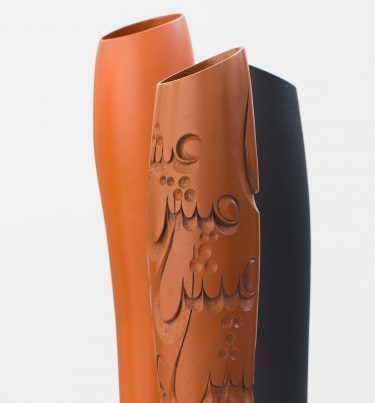Ashraf Hanna: Shararah
About the Exhibition
With his installation which was originally created for the Victoria & Albert-Museum in London, ceramic artist Ashraf Hanna (born 1967) references the “Arab Spring”. Part of this political upheaval was the “Egyptian Revolution” which was triggered by the protests on Tahir Square in Cairo on January 25, 2011.
The 25 reddish brown and black vessels stand for the young demonstrators. Their slogans “bread, freedom, and social justice” are to be found in the engraved, rhythmic patterns on the ceramics.
Ashraf Hanna was inspired by the carved and polished ceramics from Asyut in the collections of the V&A museum. The local pottery tradition of Asyut, a town on the Nile in Central Egypt, was hugely popular with tourists above all in the late 19th and early 20th centuries. In 2019, Hanna traveled to the town south of his birthplace and visited the potters there to study the materials and techniques used in typical Asyut ceramics.
So you can say that tradition and identity were the starting points for the installation by the ceramic artist, who has lived in Great Britain since 1986. However, the real statement lies in his homage to the protest of his fellow countrymen and women. “Shararah” (or ‘spark’) stands for the transformation of popular souvenirs that have long been forgotten into a political statement and the spark that started a revolution.
Many thanks go to Duke Franz of Bavaria for this loan and for his generous support of Die Neue Sammlung – The Design Museum.

